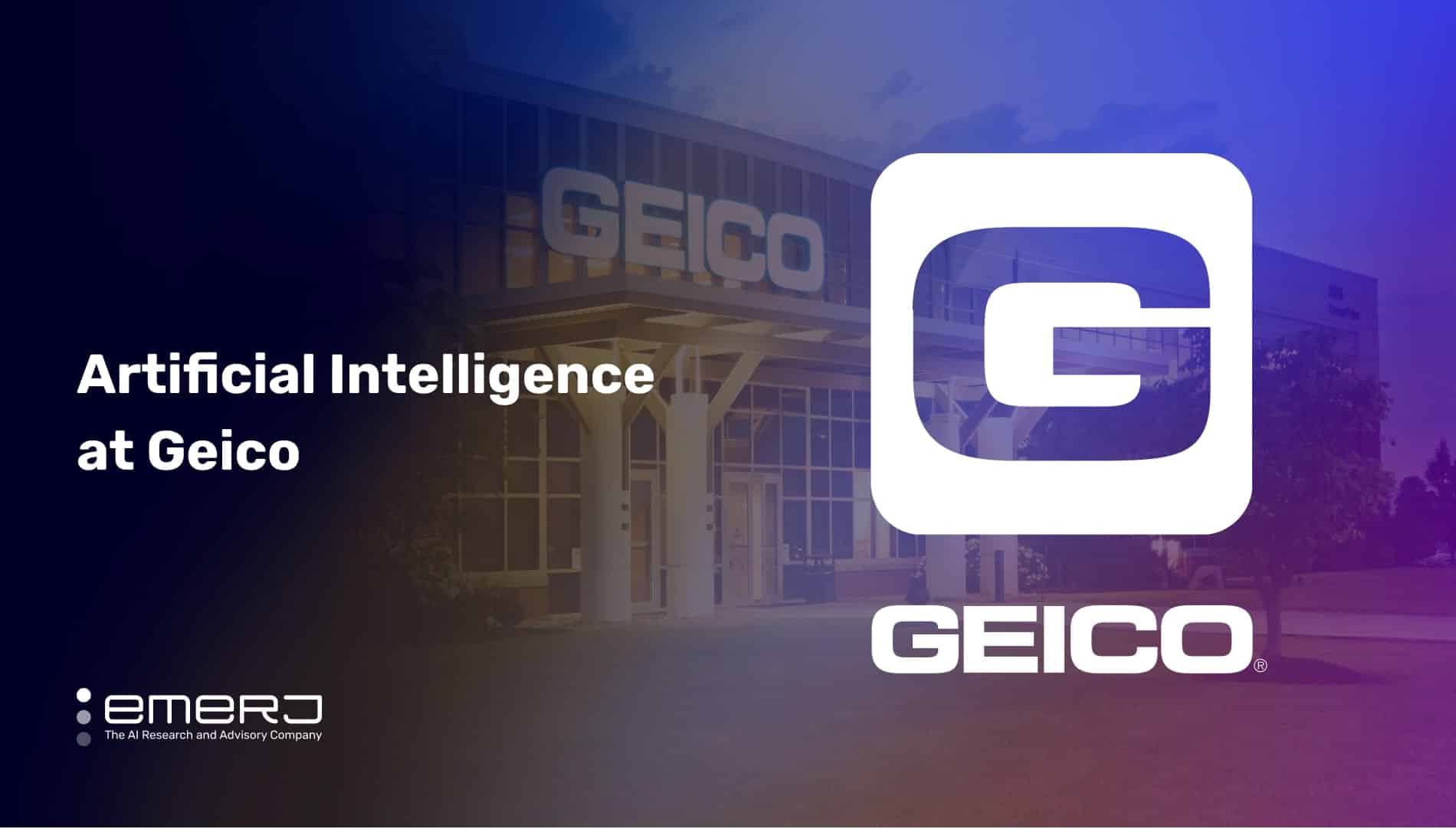
GEICO (Government Employees Insurance Company) is one of the largest auto insurance providers in the United States. Founded in 1936, it has grown to become a significant player in the insurance industry under the ownership of Berkshire Hathaway.
As of 2023, GEICO’s financial position remains strong. The company reported admitted assets of $71.4 billion and a policyholders’ surplus of $50.2 billion. The company has demonstrated a significant turnaround in profitability, with its underwriting profit improving from a loss of $1.9 billion in 2022 to a profit of $3.6 billion in 2023.
While Ajit Jain, Director and Vice Chairman of Insurance Operations at Berkshire Hathaway, described GEICO as still “playing catchup” when it comes to investing in cutting-edge technologies at Berkshire’s annual meeting earlier this year, he also noted that the company aims to bridge all its gaps in data analytics by 2025. Regarding investments in AI, GEICO has been adopting these technologies to enhance its operations. The company has partnered with some AI startups to adopt these technologies.
This article explores two compelling use cases that illustrate how GEICO’s AI initiatives are actively supporting its strategic business objectives:
- Computer vision for improving efficiency in claims processing: Leveraging computer vision and machine learning algorithms in claims processing to reduce cycle times and enhance operational efficiency.
- Deep Learning for detecting and preventing fraud: Leveraging deep learning algorithms to detect subtle patterns and anomalies, enhance fraud prediction accuracy, improve claims assessment, reduce fraudulent payouts, and streamline processing for better policyholder experiences.
Computer Vision to Improve Efficiency in Claims Processing
Insurers face significant challenges in claims processing, including managing high volumes of claims, which can be resource-intensive and time-consuming. Inconsistent estimate quality due to human error, long cycle times leading to customer dissatisfaction, rising operational costs, and increasing customer demand for faster service are key issues that drive the need for more efficient, automated solutions.
According to Accenture’s report “Transforming claims and underwriting with AI,” underwriting process inefficiencies could cost the industry $160 billion. The same report highlights that dissatisfaction with the claims experience is a crucial reason customers switch insurers.
GEICO faced similar challenges in processing claims and hence partnered with Tracktable AI to leverage their back-end solution AI Review.
Tractable AI is a technology company that develops AI solutions for assessing damage to property and vehicles, utilizing computer vision and deep learning.
Per the press release issued by Trackable AI, GEICO implemented Tractable’s AI Review product to assess and verify claim estimates. The AI implementation utilized core technologies such as Tractable’s computer vision AI, which is trained on millions of historical claims to evaluate vehicle damage with human-like accuracy. Additionally, machine learning algorithms continuously enhance the AI’s precision.
According to the company’s website and promotional materials, here is how the Tracktable AI review works:
- The process starts with an appraiser or repairer uploading photos of the vehicle damage and an estimate to the insurer’s claims management system.
- Claim Review uses computer vision technology to analyze photos of the vehicle to find damages and inconsistencies in different parts, such as the bonnet, rear door, left and right wingsgs, headlight, bumper, and more, just as a human would and evaluate the proposed repairs.
- The claims team then receives an AI-generated assessment, with flagged exceptions directed to a human expert for further review.
Here is a brief, three-minute demo showing how the Tractable AI Review platform works:
According to the video above, the workflow for Tractable’s AI-powered claims assessment begins when a policyholder submits photos of their damaged vehicle via the insurer’s app after an accident. The computer vision framework then analyzes these photos to assess and categorize the damage, determining if the car should be repaired or declared a total loss.
If repairable, the system generates a cost estimate and creates a detailed repair plan. A claims adjuster reviews the AI’s assessment for accuracy before notifying the policyholder of the decision and next steps. If applicable, the repair estimate and plan are sent directly to the chosen repair shop. Throughout the process, the AI continuously learns from each case, enhancing its accuracy over time.
Trackable AI claims the following business benefits for its customers:
- Faster Claim Processing: Tractable’s AI Review can assess estimates “within seconds,“ significantly reducing the traditional 30-minute review time per claim.
- Reduced Cycle Times: Tractable estimates that AI Review can cut eight days out of cycle times
- Increased Automation: Tractable reports that 50 % of claims, on average, can be reviewed without human involvement
GEICO reported increased underwriting profit from a loss of $1.9 billion in 2022 to a profit of $3.6 billion in 2023. While these losses can’t be solely attributed to the AI implementation, they likely played a role in improving efficiency and accuracy.
GEICO reduced its staffing by 20%, from 38,285 employees in 2022 to 30,584 in 2023. While these decisions weren’t made solely for AI implementation, they likely contributed to the company’s ability to operate with fewer staff.
While these numbers provide context for GEICO’s performance and the potential impact of AI, the specific contribution of the Tractable AI implementation to these outcomes is not explicitly stated in the available search results. While the use case is widely publicized in multiple outlets, GEICO has not publicly released detailed metrics on the direct impact of the use case on their overall business performance.
Deep Learning for Detecting and Preventing Fraud
Insurance fraud is a pervasive and costly problem in the United States, with far-reaching consequences for both the insurance industry and consumers.
The Coalition Against Insurance Fraud reports that in 2022, total losses from insurance fraud across all sectors amounted to an estimated $308.6 billion. This data comes from a study titled “Impact of Insurance Fraud on the U.S. Economy”, conducted in partnership with the International Association of Special Investigation Units, the National Insurance Crime Bureau, the American Property & Casualty Insurance Association, and the Insurance Information Institute.
Additionally, the FBI reports the total cost of insurance fraud (non-health insurance) to be more than $40 billion per year. The FBI also says this fraud increases premiums for the average U.S. family between $400 and $700 per year.
In the press release issued by CCC, a technology vendor company, Troy Penry, Vice President of Claims at GEICO, said even auto insurance fraud is a longstanding challenge for the industry.
GEICO likely wanted to adopt a digital solution to strengthen fraud detection and streamline claims processing. So, it partnered with CCC for its product, CCC Smart Red Flag Detection with Cross Carrier Analysis.
CCC is a technology company that offers AI and an intelligent cloud platform for auto insurance companies.
In the same press release, Tory said the company’s goal with the flag detection tool was to improve visibility into suspicious activity, improve assessment accuracy, and reduce fraudulent payouts.
According to the company’s website, CCC Smart Red Flag Detection With Cross Carrier Analysis is primarily a fraud detection and prevention tool that automatically scans claims data and photos to flag suspicious patterns or discrepancies in auto insurance claims. Leveraging cloud technology for data ingestion, it uses customizable rules to configure AI models and employs a deep learning framework to enhance the accuracy of fraud predictions.
The CCC website also describes the platform’s following functions:
- AI-driven scanning: The system most likely uses computer vision or OCR to automatically scan incident photos and claim data submitted during the claims process.
- Flagging suspicious activity: When anomalies are detected, the system flags the claim for review, either notifying an adjuster or auto-assigning it to an investigative team.
- Smart Red Flag scoring: The insurance companies can assign a dynamic score based on parameters, helping prioritize potentially fraudulent claims.
- Visual comparison: The system allows side-by-side viewing of stored images and new claim photos, as well as comparison of VINs and operation codes to identify common repair parts across claims.
- Cross-carrier analysis: For participating insurers, claims are automatically compared against those received by other carriers on the CCC network, enhancing fraud detection capabilities across the industry.
Screenshot from CCC Smart Red Flag Detection With Cross Carrier Analysis Documentation. (Source: CCC)
The screenshot above highlights one of the key features of the CCC tool, which identifies potential fraud triggers, such as multiple claims filed using the same VIN or the same point of impact (POI).
According to a research paper by the University of Wisconsin, AI helps insurers with the below four three benefits in fraud detection:
- Pattern recognition: AI systems can analyze vast amounts of data to identify subtle patterns and anomalies that may indicate fraudulent activity, which human analysts might miss.
- Real-time processing: AI enables real-time analysis of claims, allowing for immediate flagging of suspicious activities and faster intervention.
- Improved accuracy: Machine learning algorithms can be trained on historical fraud cases, continuously improving their ability to detect new and evolving fraud schemes accurately.
According to S&P Global, GEICO experienced a remarkable financial turnaround in 2023. The company’s loss and loss-adjustment-expense (LAE) ratio decreased significantly, falling below 80% in the fourth quarter of 2023, marking its best performance in years. The numbers suggest that GEICO likely reduced its overall losses, potentially including those from fraud.
While specific data on GEICO’s fraud-related losses is not available, GEICO’s financial reports reveal two additional points of interest. First, the company recorded a favorable development of $1.5 billion in 2023, indicating that actual losses were lower than previously estimated. Second, GEICO’s average premiums per policy increased by 16.8% in 2023, which could serve as a deterrent to fraudulent claims.
Higher premiums mean policyholders have more money invested in their insurance. They may also make policyholders less likely to risk losing their coverage or facing legal consequences by filing fraudulent claims.








